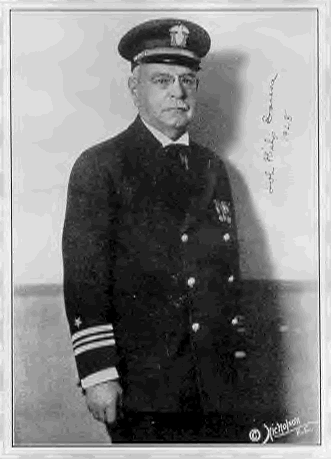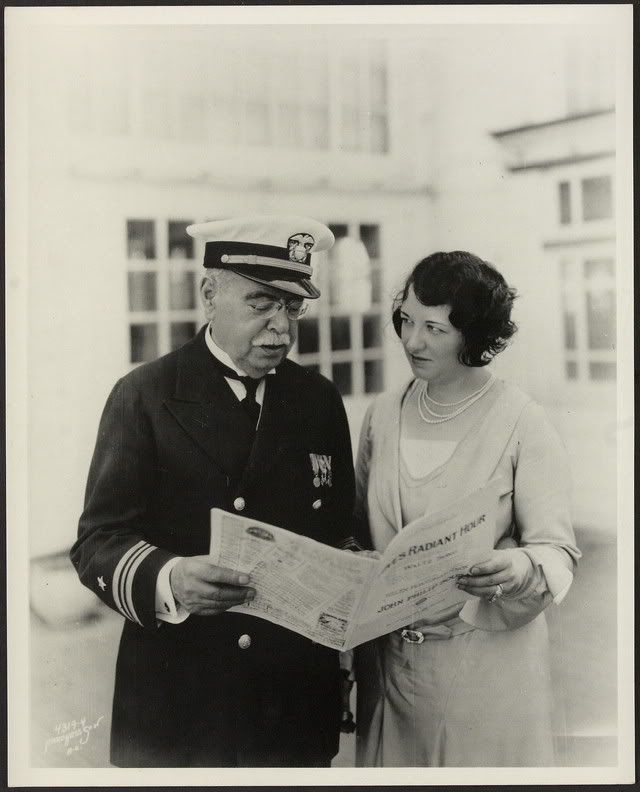"One is hardly sensible of fatigue
while he marches to music."
AUTHOR: Thomas Carlyle

to the latest, cutting-edge music, like bringing
excerpts of Wagner's Parsifal to New York
a decade before the Metropolitan Opera
staged it and introducing ragtime to Europe,
helping to spark many a composer's
interest in American Music.










AUTHOR: Thomas Carlyle

MEANING OF THE QUOTE:
"The movement in music
sparks the adrenaline. "
"The movement in music
sparks the adrenaline. "
COMPOSER
SOUSA

KING COTTON MARCH


KING COTTON MARCH
(Solo Cornet Sheet Music)
U.S. Marine Band
https://www.youtube.com/watch?v=jBOAVZzxv4Q

INFORMATION MOSTLY FROM:
U.S. Marine Band
https://www.youtube.com/watch?v=jBOAVZzxv4Q

INFORMATION MOSTLY FROM:
https://andypease.wordpress.com/2010/10/26/
king-cotton-by-john-philip-sousa/
KING COTTON MARCH (1895)
king-cotton-by-john-philip-sousa/
KING COTTON MARCH (1895)
King Cotton (the expression "King Cotton"
in general refers to the historically high
is a military march composed in
1895 (a year before his famous work,
Stars and Stripes Forever) by
John Philip Sousa and was created for the
1895 (a year before his famous work,
Stars and Stripes Forever) by
John Philip Sousa and was created for the
in which he played there for three weeks.
It marked the important first major appearance
of the Sousa Band in the American South.
His participation turned the fair from being a
potential financial disaster into a profitable
favorites, and it has become one of his most
popular. Without a doubt it has become
one of Sousa's top 10 marches. It may
be that he wanted the piece to follow in
the path of the great dance music success
of The Washington Post (1888),
one of Sousa's top 10 marches. It may
be that he wanted the piece to follow in
the path of the great dance music success
of The Washington Post (1888),
since he fashioned a beautiful
King Cotton trio melody that is essentially
The Washington Post trio played upside down.
King Cotton trio melody that is essentially
The Washington Post trio played upside down.
dozen operettas, six full-length operas,
and over 100 marches, earning
the title "March King."
and over 100 marches, earning
the title "March King."
He enlisted in the United States Marine Corps at
an early age and went on to become the conductor
of the President's Own Marine Band at age 26.
In 1892 he formed "Sousa and his Band,"
which he toured the United States and the world under
his directorship for the next forty years to great
acclaim. Not only was Sousa's band hugely popular,
but it also exposed audiences all over the world
 |
| https://www.wikiwand.com/en/John_Philip_Sousa |
his directorship for the next forty years to great
acclaim. Not only was Sousa's band hugely popular,
but it also exposed audiences all over the world
 |
excerpts of Wagner's Parsifal to New York
a decade before the Metropolitan Opera
staged it and introducing ragtime to Europe,
helping to spark many a composer's
interest in American Music.
Marcus L. Neiman, at the Band Music PDF
Library, writes about King Cotton:
King Cotton (March) was published in 1895
by the John Church Company
Library, writes about King Cotton:
King Cotton (March) was published in 1895
by the John Church Company
 |
| http://www.loc.gov/resource/sousa.200028354.0/?sp=1 |
in 1939. It is a curious fact of the music world
that marches written for fairs and expositions
almost always fade into oblivion. Two Notable
exceptions are Mr. Sousa's King Cotton
 |
| http://www.dws.org/sousa/works/marches/item/the-fairest-of-the-fair |
THE FAIREST
OF THE FAIR
United States Marine Band
OF THE FAIR
United States Marine Band
The former was written for the Cotton States
and International Exposition of 1895,
and International Exposition of 1895,
 |
| http://georgiainfo.galileo.usg.edu/gastudiesimages/1895%20 Cotton%20States%20Exposition%20Poster%201.htm |
and the latter for the
Boston Food Fair of 1908.
 |
Mr. Sousa and his band had great
drawing power at fairs and expositions
and were much sought after. But, officials
of the Cotton States and International
Exposition in Atlanta attempted to cancel their
three-week contract with the Sousa Band because
of serious financial difficulties. At Mr. Sousa's
insistence, they honored the contract, and at the
first concert became aware of their short-
sightedness. Atlanta newspapers carried rave
reviews of the band's performance. For example:
"... The band is a mascot. It has pulled many
expositions out of financial ruts. It actually saved
the Midwinter Fair in San Francisco. Recently at
expositions out of financial ruts. It actually saved
the Midwinter Fair in San Francisco. Recently at
the St. Louis and Dallas expositions Sousa's Band
It proved an extraordinary musical attention, and
played before enormous audiences. It is safe to
predict that history will repeat itself in Atlanta, and
that the band will do the Exposition immense good.
A great many people in South Carolina, Alabama
and Georgia have postponed their visit to the
Exposition so as to be here during Sousa's
engagement, and these people will now
begin to pour in. Sousa's latest march,
'King Cotton,' has proved a winner."

It has been heard from one end of Dixie to the other
and it has aroused great enthusiasm and proved a fine
advertisement for the Exposition. The Sousa Band
did indeed bring the exposition "out of the red," and
the same officials who had tried to cancel Sousa's
engagement pleaded with him to extend it. King
Cotton was named the official march of the
exposition and it has since become one
of the perennial Sousa favorites.
"King Cotton" opens with one of those catchy Sousa
tunes, its bounce and effervescence uniting with the
colorful instrumentation to impart a mood of playful
festivity. Gradually, as would be typical in
many later works, most notably in
STARS AND STRIPES
FOREVER
FOREVER
John Williams, Conductor
The Boston Pops Orchestra
and Invincible Eagle,


The Invincible Eagle March
"The President's Own"
United States Marine Band
United States Marine Band
the theme, and indeed the whole character of the
music, turns more muscular, more dramatic in the
latter half. While King Cotton does not quite reach
for the heroism associated with the famous marches
cited above, it nevertheless achieves a festive
grandeur and joy that make it irresistible to band
music enthusiasts. The theme itself is very similar
to the one in Sousa's 1893 Liberty Bell March,
used as the main theme to the once-popular
British television comedy show,
Monty Python's Flying Circus.
MONTY PYTHON'S
FLYING CIRCUS
INTRO THEME
LINKS

LISTEN AND VIEW
THE MUSIC NOTATION
TO THE MELODY
THE MUSIC NOTATION
TO THE MELODY
ON THIS VIDEO
(the number of bars is indicated in the parentheses)
INTRO(4)
|:A(16):||: B(16):||:Trio(16)
BREAK(16)
TRIO/GRANDIOSO-2nd time(16):|
AUDIO LINKS
 |
| http://carole-foret.artistwebsites.com/featured/limestone-county-cotton-carole-foret.html |
Being that King Cotton was one of Sousa's
personal favorites he even made up some non-
sensible lyrics, for the private amusement of
children, to fit the second section of the march.
One of his soprano soloists, Marjorie Moody,
 |
| Sousa and Marjorie Moody |
copied the lyrics down:


The sun was a-shining in the sky.
The sky was black and blue.
As Barnicle Ben and Jazzy Jen
It came down the avenue.
And everybody laughed with glee,
And "Whispered is it he or she?"
For one of his legs was shorter
Than it really ought to be
KING COTTON
PIANO ARRANGEMENT






LINKS
https://en.wikipedia.org/wiki/King_Cotton_(march)
https://www.wikiwand.com/en/King_Cotton_(march)#/References
https://www.wikiwand.com/en/King_Cotton_(march)#/References
http://www.frontierbrigadeband.com/WW/31-KingCotton.pdf
http://cdn2.orastream.com/pdf/747313265176.pdf
http://drum.lib.umd.edu/bitstream/1903/12152/1/Warfield.pdf
http://www.marineband.marines.mil/Portals/175/Docs/Audio/
Educational_Series/semper/semper_fidelis.pdf
http://cdn2.orastream.com/pdf/747313265176.pdf
http://drum.lib.umd.edu/bitstream/1903/12152/1/Warfield.pdf
http://www.marineband.marines.mil/Portals/175/Docs/Audio/
Educational_Series/semper/semper_fidelis.pdf
 |
| Edgar Degas: Cotton Merchants in New Orleans, 1873 |


















